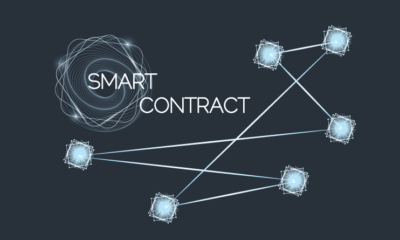
The Korea Federation of Banks (KFB) announced on Monday, that the local banking industry would launch a new blockchain platform called BankSign in July to verify customer IDs.
The KFB was founded in 1984, and its membership includes prominent banks of the country such as Shinshan and Woori Banks. These two banking institutions have been exploring blockchain-based solutions for their business customers for quite some time now.
BankSign – the Blockchain-based ID verification system will help these banks replace its existent verification systems that have been rendered obsolete with recent technological advancements.
This new system is built on Samsung Enterprise Solution Division’s private blockchain platform known as Nexledger.
The Kore JoongAng Daily reports suggest that the beta testing of the BankSign platform began in April when the South Korean government lifted a mandate that prevented banks from exploring verification services.
In a press release, Samsung noted that their platform will use aspects of “artificial intelligence,” “big data analytics” and “advanced IT technologies, such as intelligent process automation,” to help facilitate an advanced blockchain platform for their users.
Simply put, blockchain is a system where data is stored in ledgers, which are distributed and saved on the computers of participating parties, bank servers in this case. Since the information is distributed among various banks and banking platforms, the system is nearly impregnable against hacking. The larger the network, the more secure the blockchain.
Unlike a public blockchain system, private blockchain systems require permission or an invitation, often by the network starter, to gain access to the ecosystem. BankSign will be KFB’s private blockchain system.
The way this verification will work is through one-way mathematical equations called hashes. When a new block is created, all of its data is hashed, sometimes even multiple hashes are added. This type of hashing associates certain data information to a unique result.
These results are verified by nodes at each point on the network by re-running the same mathematical equations with the same inputs and confirming that the output matches exactly. If the output doesn’t match what that tells the node is that the inputs don’t match, error or fraud is detected.
Until now, Korean banks relied on the 20-year old public verification systems, which are known to be quite complex and inconvenient. While biometric authentication has improved the system, it is still a cumbersome process for consumers.
BankSign aims to remove the inconvenience of ID authentication and verification. As a step towards this objective, the Korean government revised the country’s “Digital Signature Act”. As part of this revision, the mandate on the use of the traditional verification systems was lifted.
BankSign marks the second time that Nexledger has been applied to the financial sector. Previously, Samsung SDS provided the platform to Samsung Card in late 2016, a spokesperson from the tech company explained.
Local media cited a KFB representative as saying:
“BankSign is the first project co-developed by the local banking sector utilizing blockchain technology. While BankSign will start off by providing the service in the banking sector, we will work with the government and other public organizations to expand its usage.”
Park Chang-ok of KFB commented:
“With BankSign, banks will have options to choose from in verifying consumer identity, not just the public certification system.” He revealed that the platform is based on Samsung SDS’s blockchain service Nexledger, which was launched last year.
The BankSign platform services will be made available for the website and mobile users of KFB member Banks.








